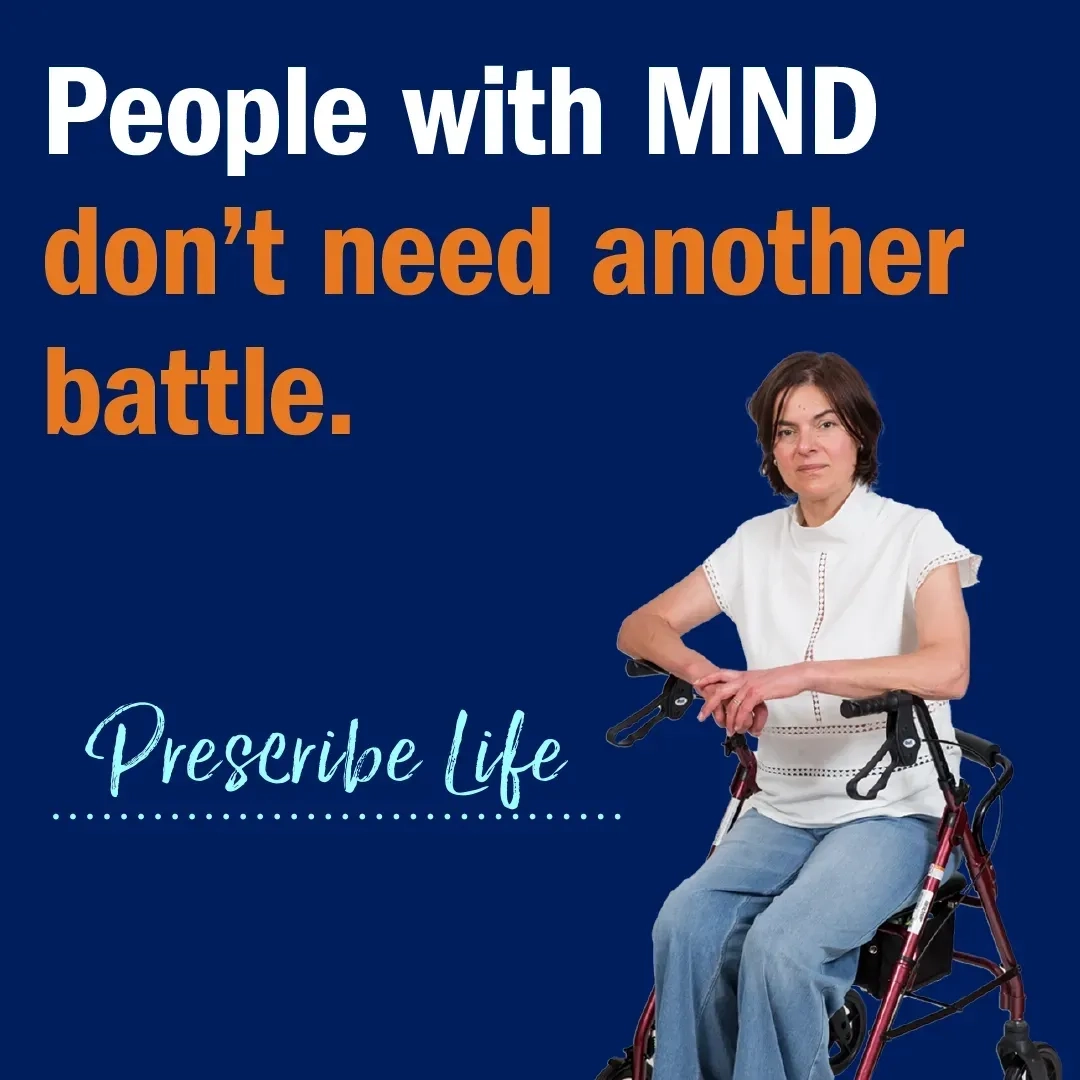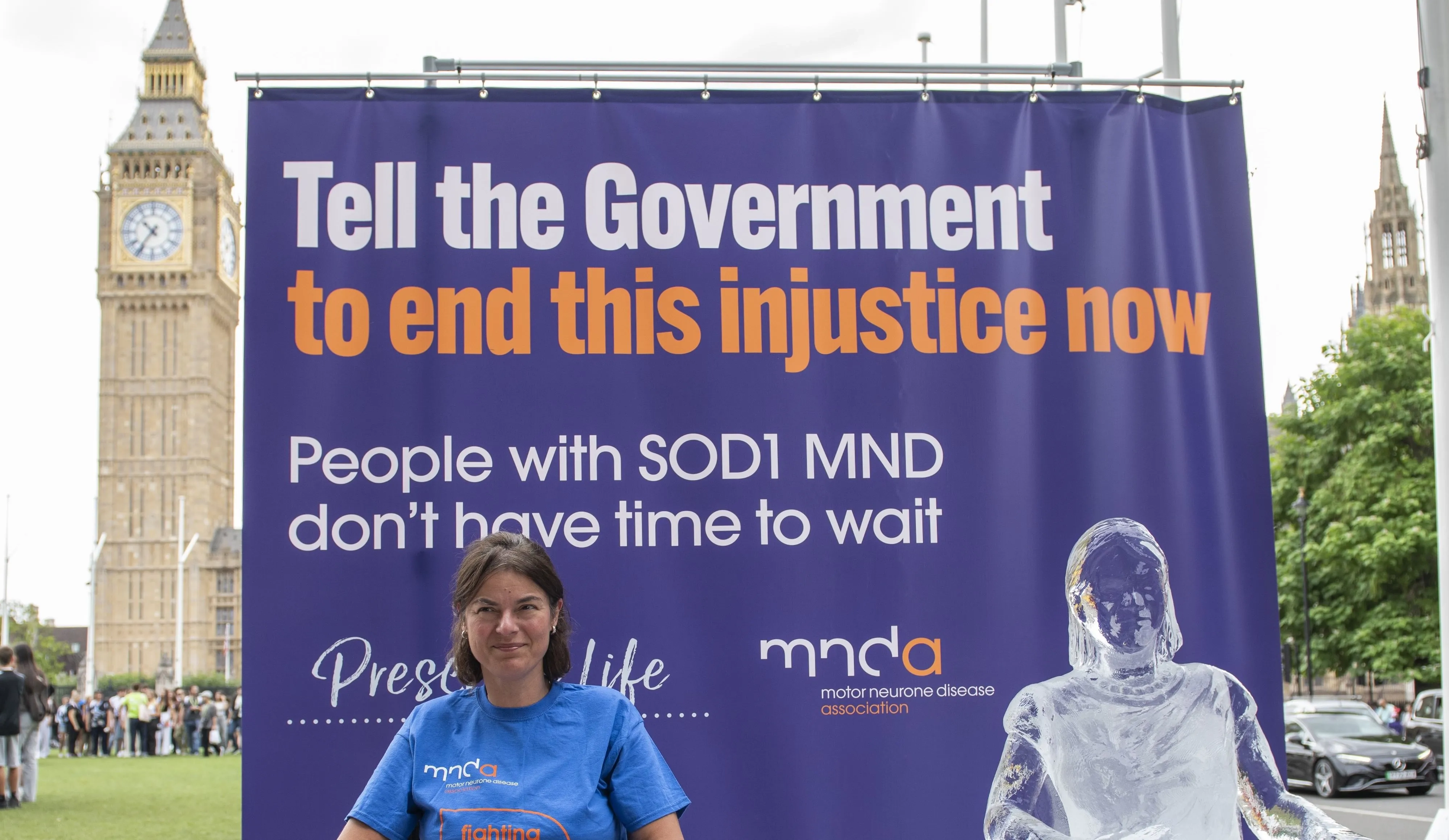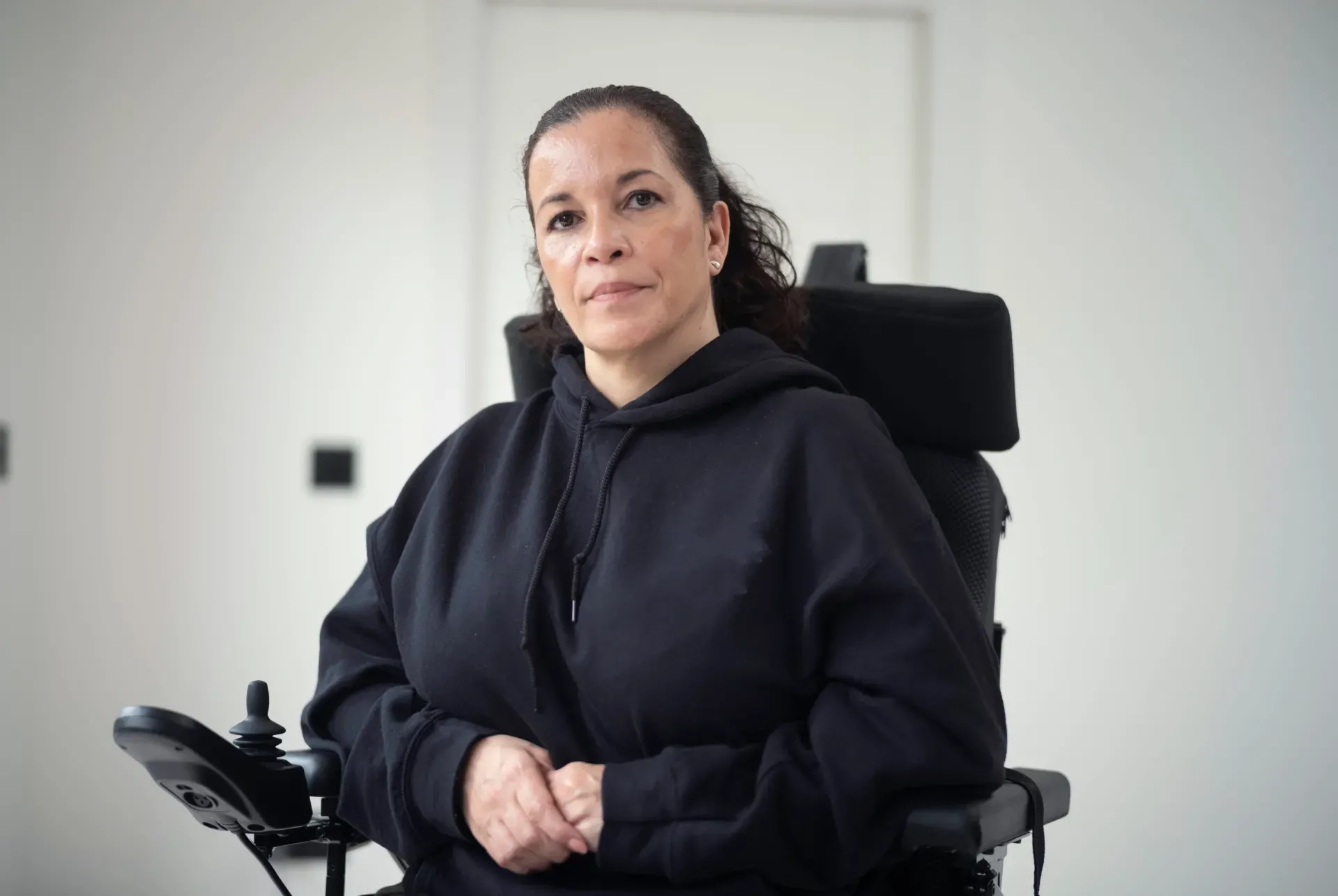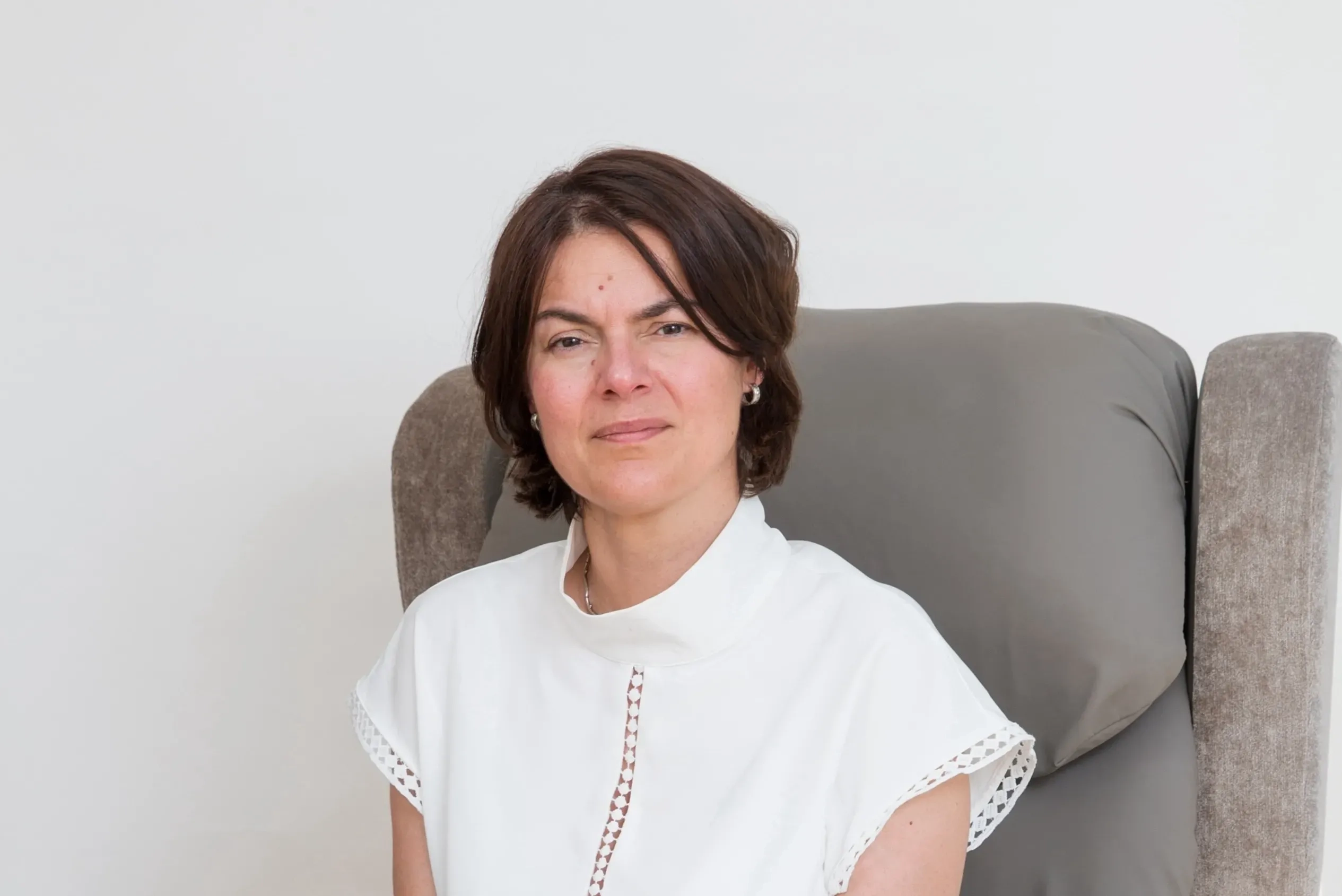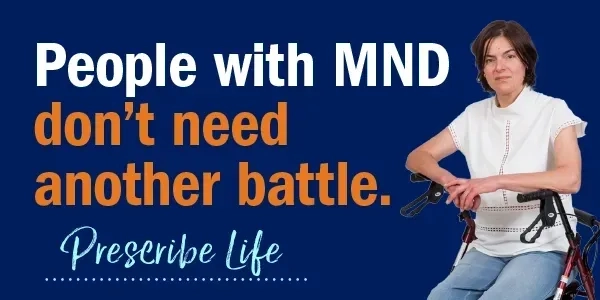UPDATE 16 December 2025: It's been confirmed the first stage of the appraisal process for tofersen - a ground-breaking treatment for the 2% of people with SOD1 MND - is set to start.
This will determine whether tofersen will be available on the NHS and we're now preparing to submit evidence to support the application.
We're continuing to push for access to tofersen for everyone who might benefit, regardless of where they live, while we await the outcome of the appraisal.
UPDATE 26 November 2025: We're delighted that more MND Care Centres have now started to give tofersen to patients through the Early Access Programme (EAP). Following engagement by the MND Association, three more Care Centres have begun delivery in recent weeks: the Manchester Care Centre, the Northern Ireland Care Network and the South Wales Care and Research Network.
This means that the following MND Care Centres are now delivering the tofersen EAP:
- Sheffield Care Centre
- Manchester Care Centre
- London St George’s
- Sussex Care Network
- London King’s Care Centre
- Oxford Care Centre
- Northern Ireland Care Network
- South Wales Care and Research Network
We continue to engage with MND Care Centres to support them to begin EAP delivery, and hope to have further updates to share shortly.
Unfortunately, we know many patients still can't access this life-saving drug, and it's still not available on the NHS. We're continuing to call on the Government to step in and provide the resource needed to allow every eligible person to access tofersen as soon as possible. We know that people living with MND don’t have time to wait, and we are treating this issue as a top priority. We'll update you again as soon as we have news.
UPDATE 17 July 2025: Thank you to all of you who signed our Prescribe Life petition. At the point of handing it in to the Department of Health and Social Care, we had 21,859 signatures: a fantastic number.
We spent the morning before hand-in outside Parliament with Seckin McGuirk, who has SOD1 MND, and an ice sculpture modelled on her. As the sculpture melted, it symbolised the devastating impact of MND. Seckin is one of around 20 people denied tofersen because of NHS constraints – even though around 40 other people are already benefiting from the drug.
Read more: Our day of action and incredible ice sculpture in Westminster
Join our campaign to help people living with SOD1 MND access a life-changing treatment
For the 2% of people with MND whose disease is caused by a fault in the SOD1 gene, there is a ray of hope. A groundbreaking new treatment, tofersen, has been developed to treat this type of MND. It can significantly slow down the progression of MND and in some cases stop it altogether – something we have never seen before in an MND treatment.
For people like Seckin McGuirk, who is living with SOD1 MND, tofersen offers new hope of slower disease progression, longer life expectancy, and more time to enjoy life with her family and friends.
But she’s been told she can’t have tofersen, due to NHS resource constraints.
Tofersen is currently being assessed to see if it will be paid for by the NHS, but that will take months. In the meantime, tofersen has been made available to patients free of charge through an Early Access Programme (EAP).
This has led to some of the people who need it getting access, and many of these people have seen their condition stabilise. But some people who desperately need this treatment are missing out, because their local services do not have capacity to give it to them via the required monthly lumbar puncture – even though the drug itself is available for free.
Sadly, Seckin was given the terrible news that she cannot currently be given tofersen. She and her family have to cope with knowing that there is a freely available drug that could significantly extend her life – but she cannot have it.
That’s why we are calling on the Government to take urgent action so that everyone who needs tofersen can access the EAP. It’s not right that some people who desperately need this drug can’t receive it. People with MND don’t have time to wait. A solution is desperately needed to break down the barriers to access – and it is needed now.
Please join our campaign asking the Government to intervene immediately so that nobody misses out on this vital treatment.
What is tofersen?
Tofersen is a groundbreaking new treatment that is effective for the 2% of people with MND whose disease is caused by a fault in the SOD1 gene.
Is tofersen available on the NHS?
Tofersen is currently (as of May 2025) in the process of being licensed and then assessed to become available on the NHS. This process will take several months at least. In the meantime, the drug is being offered to the NHS at zero cost.
What was the tofersen campaign win last year?
In October 2024 we launched a petition asking NICE to reconsider how they categorise tofersen, to give it the best chance of passing assessment and being made available on the NHS.
On 18 November 2024 NICE announced that – as our petition had been asking – they had reconsidered their decision, and agreed to assess tofersen via the Highly Specialised Technology (HST) route.
This means that there’s a much greater chance of tofersen becoming available on the NHS.
More than 15,000 people signed our petition in just a few weeks, sending NICE a powerful message about how important tofersen is – a groundbreaking new treatment for the 2% of people with MND who have an alteration in the SOD1 gene. And NICE listened.
Who can access tofersen currently?
Tofersen is currently being assessed to become available on the NHS, but that will take several months at least. In the meantime, the manufacturer has made tofersen available to patients free of charge through an Early Access Programme (EAP), as long as the NHS provides the staff time and resources.
But some people who desperately need this treatment are missing out, because their local services don’t have capacity to give it to them via the required monthly lumbar puncture – even though the drug itself is available for free.
